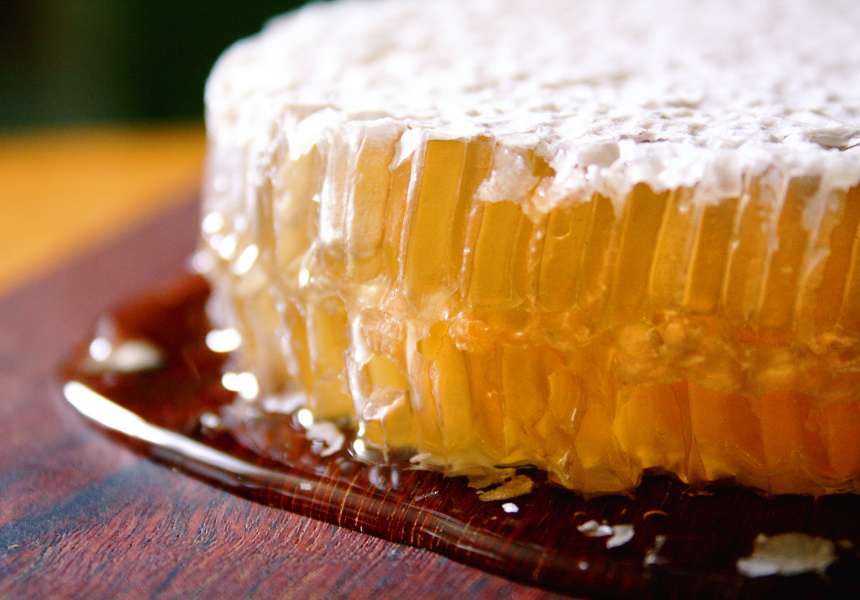The honey most of us are used to eating is syrupy and viscous. But the honey produced by Malfroy’s Gold is different: it has a thick and creamy texture. Sometimes it features spicy, umami notes and at other times a nuttiness.
“A lot of people, particularly chefs – and quite a few well-known chefs – told me a few years ago they really hate honey and they never use it because it’s always too sweet,” co-owner Tim Malfroy tells Broadsheet. “Ours doesn’t have your typical kind of honey flavour; there are complexities there.”
Malfroy and his wife, Emma Malfroy, started their small business 17 years ago, after moving to the Blue Mountains. Both musicians (Tim is a guitarist and Emma a vocalist and multi-instrumentalist), they realised it would be difficult to keep up their work from their new base, so they turned their focus to bees. This wasn’t totally new territory: Malfroy is a second-generation beekeeper, and was determined to try and solve some of the problems honeybees commonly face.
We think you might like Access. For $12 a month, join our membership program to stay in the know.
SIGN UP“Over the last 150 years, the wants of the beekeeper have drifted so far away from the needs of the bee colony,” Tim says. “Bees are a biological unit and, like any super organism, have certain needs. The beekeeping style and industry places a lot of pressure on the bee colonies. A simple example of that is that Australian beekeepers migrate their hives constantly to increase yield.”
Through extensive research, travelling and experimenting, the Malfroys have come up with an ethical and sustainable practice centring around bee-friendly, hand-built Warré hives, which are designed to closely mimic how bees live in the wild. Tim had to re-envision French-designed Warré hives to suit Australian conditions, and he was the first Australian beekeeper to use this type of hive.
“We leave our bees in one location, which decreases yield but increases the bees’ health and resilience. We let them build their own comb, which is in stark contrast to conventional beekeeping, where beekeepers give bees artificial combs made of wax or plastic,” Malfroy says. “We don’t feed the bees anything. We don’t breed the bees, the bees control all their natural-selection processes, and we don’t use any chemicals … There’s not a lot of input that goes into our system – in fact, there’s almost no input.”
Today, the couple manage 300 Warré hives in the lower and upper Blue Mountains, and the NSW Central Tablelands. It’s a small operation compared to other commercial beekeepers in Australia, which typically run from 800 to 1000 hives. While Tim admits this method means honey and honeycomb yield differs constantly, having the hives in multiple locations guarantees there’s always honey and honeycomb to harvest.
“We found that the proof is in the pudding in terms of the health of the bees and the quality of the end product,” says Tim. “We’re pretty much outliers though. There are a lot of small-scale beekeepers doing this, but we’re the only commercial beekeepers in the country doing it this way.”
Tim is now considered a pioneer in the natural beekeeping movement – and his honey is used by chefs such as Quay’s Peter Gilmore and Firedoor’s Lennox Hastie. Malfroy’s wild honey and honeycomb are also available to buy directly from Malfroy’s for your home kitchen.
Sydney Pantry is a series celebrating ingredients made by Sydney’s greatest producers that have gone from cult classics to kitchen staples.



